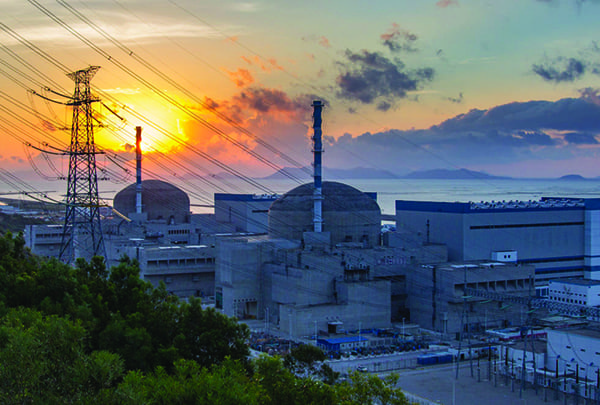How to Build an On-Time, On-Budget Nuclear Power Plant
The post How to Build an On-Time, On-Budget Nuclear Power Plant appeared first on POWER Magazine.

Building a new nuclear power plant is challenging. Nuclear construction projects always seem to be behind schedule and over budget. Even in the late 1960s and early 1970s-arguably nuclear power's heyday-when plants were being planned all over the U.S. and government regulations were still nascent, projects were difficult to finish. According to one report, 253 reactors were ordered in the U.S. from 1953 to 2008, but almost half were never completed, being either canceled or abandoned after significant investments were made.
Delays and cost overruns are not isolated to U.S. projects; poor results can be found in nearly every country that has ever pursued nuclear power as part of its energy mix. Numerous studies have been done over the years in an attempt to understand the problems and resolve the issues, but new units have still found themselves behind schedule and over budget. Vogtle Units 3 and 4 in the U.S., Flamanville 3 in France, and Olkiluoto 3 in Finland are current-day examples, among others.
New REDCOST' ReportThe Nuclear Energy Agency (NEA), an intergovernmental agency that operates within the framework of the Organisation for Economic Cooperation and Development (OECD), released a report on July 2 titled Unlocking Reductions in the Construction Costs of Nuclear: A Practical Guide for Stakeholders." Agency insiders affectionately call it the REDCOST" report. To launch the report, the NEA hosted a webinar for journalists and others interested in the research. During the session, Mike Middleton, practice manager for nuclear at Energy Systems Catapult and chair of the NEA ad hoc expert group on REDCOST, gave a 25-minute presentation on the study's findings.
Experience that we've seen from recent first-of-a-kind [FOAK] projects in OECD and non-OECD countries is that there have been some cost overruns and some difficulties in delivering those projects," Middleton said, noting that projects appear both risky and expensive as a consequence. But the key message is such projects don't need to be risky, and they don't need to be expensive," he said.
The NEA believes it's important to get costs and schedules under control in order for nuclear power to be a relevant part of the world's move toward clean, sustainable energy. This is about nuclear playing its potential role in combating the causes of climate change," Middleton said. The group mainly focused on large, Generation-III light water reactors, because these designs have the greatest potential for new capacity additions over the next decade.
FOAK Projects Can Be ExpensiveThe NEA study found that typical investment costs represent 78% of a nuclear plant's levelized cost of energy (operations and maintenance expenses totaled about 13%, while fuel accounted for the other 9%). And within that initial investment cost, it's the financing that plays a very significant element, both in the interest during construction, but also the return on the capital during the operating phase of the plant," said Middleton.
FOAK projects are the riskiest. The researchers said immediate cost reductions could be expected on post-FOAK projects due to greater design maturity and project management lessons learned. Other factors that reduce risk include regulation stability and predictability, and multi-unit and series effects. Once Nth-of-a-kind" units become the norm, greater cost reductions are expected through design optimization, technology and process innovation, revisiting regulatory interactions, and the harmonization of licensing codes and standards.
To drive the point home, Middleton compared the Flamanville 3 project to Taishan Units 1 and 2 in China. Both facilities utilize EPR technology. According to a 2019 study referenced in Middleton's presentation, Flamanville's overnight construction costs (OCC) totaled 7,575/kW; whereas, Taishan's OCC was reportedly 2,900/kW. Incidentally, Taishan was a POWER Top Plant award winner in 2019.
When asked why nuclear plant construction projects seem to be more successful in China than in other countries, Middleton replied, Clearly, the political structure and context is different in China compared to western democracies, but that would be avoiding the issue of strong, consistent, and clear government commitment to delivering a Chinese program. So, the thing that comes over most is the commitment."
Keys to Cost ReductionsThe REDCOST report says, the most effective way to reduce construction costs in the near term (early 2020s) is to develop a nuclear programme that takes advantage of serial construction with multi-unit projects on the same site and/or the same reactor design on several sites." Middleton noted that these effects have been observed in the past, such as in France (1980s), Japan (1990s), and Korea (2000s), and in Russia and China today.
The NEA recommended that countries commit to a standardized nuclear program, with the report noting that it's the most promising avenue to effectuate cost reductions." The report also suggests supply chain development and industrial performance must be enabled and sustained, and that governments must foster innovation, talent development, and collaboration at all levels.
Nuclear new-build projects require long-term government planning involving both specific commitments and market regulations. In addition, financial support is currently essential in western OECD countries-at least as a transitional measure-to deliver cost-competitive new nuclear construction," the report says.
Government policies that support nuclear construction are critical to the success of new-build projects. The NEA said policy support mechanisms should include requirements for design maturity and construction readiness, and should ensure that the regulatory framework for nuclear safety remains stable and predictable throughout construction.
The nature of government involvement will vary from country to country, but the need for that government involvement is very, very clear," Middleton concluded.
-Aaron Larsonis POWER's executive editor.
The post How to Build an On-Time, On-Budget Nuclear Power Plant appeared first on POWER Magazine.